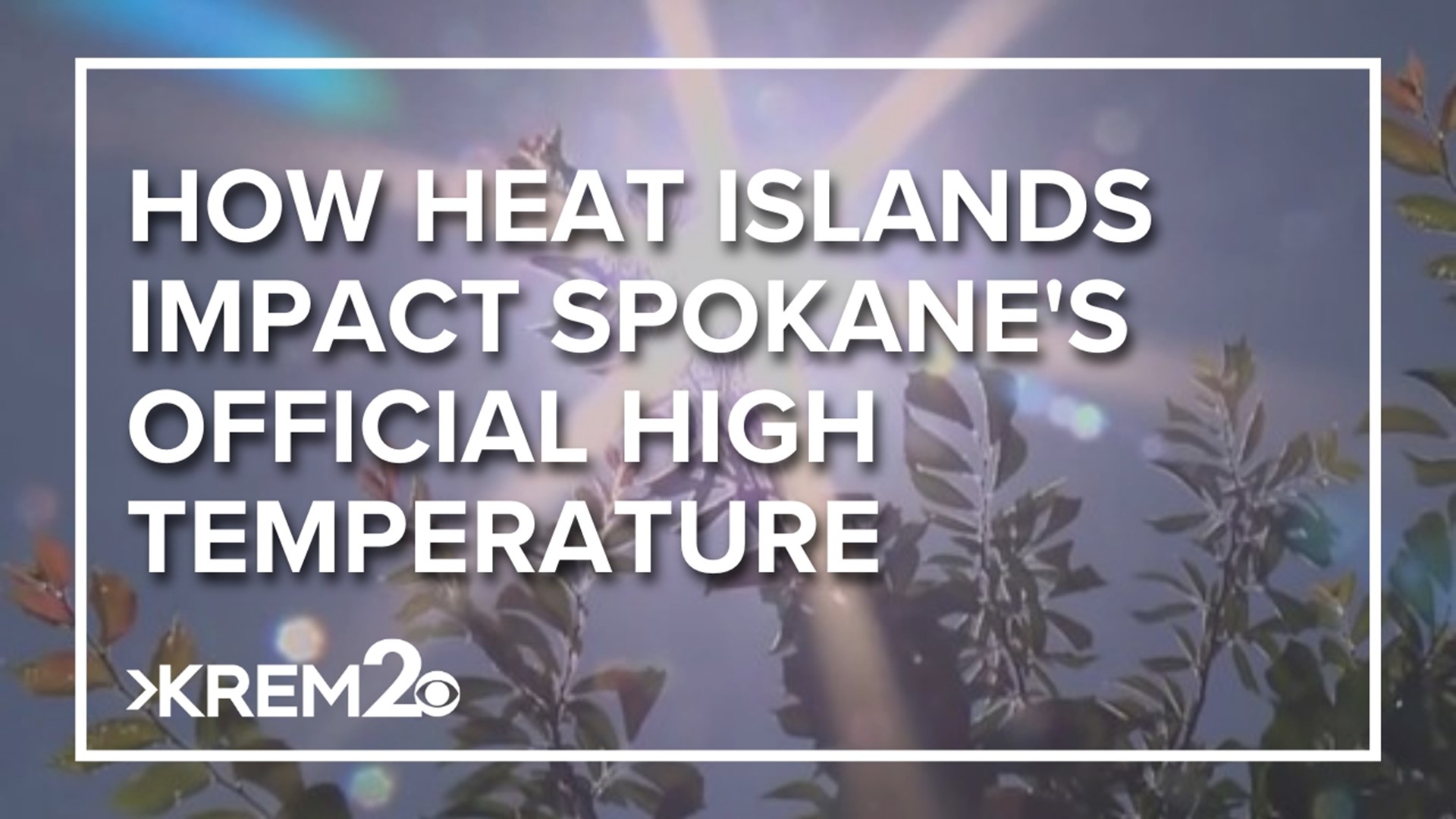SPOKANE, Wash. — Did you know that when record temperatures are set for the City of Spokane it comes from a reading at Spokane International Airport? However, that doesn't mean it is the same temperature everywhere in the city.
Just like in winter, some places can get more snow than the official count from the airport.
In fact, several areas across the region get quite a few degrees warmer than what the official reading says.
Steve Bodnar from the National Weather Service told KREM 2, “Considering that the airport is about 400 feet higher than downtown, most likely the temperatures are warmer as you get downtown than up in the higher elevations. So that can sometimes be two or three degrees there.”
On top of elevation differences, the amount of concrete, asphalt and buildings can make a big difference in the heat as well.
Gonzaga did a heat study during the summer of 2022 where they found certain neighborhoods are ‘heat islands’ with more extreme temperatures on hot days. The spots that get particularly hot are downtown, East Central and between Audobon and Garfield.
Bodnar said, “Concrete is heating up a lot more than say soils and grasses. So that is kind of the idea of a heat island and as you have all this heat in a small area, it can help push the temperatures warmer, even with the same conditions and different vegetation around it.”
An interesting note is, 100 years ago, Spokane’s official temperature reading came from downtown. We looked at some of the numbers historically to see how this plays out.
When you average out the 30 years from 1880 to 1946, for July, August and September, the average high temperature in downtown was 79.9 degrees.
That is .2 degrees warmer than those same months in the 30 years from 1947 to 2013 at Spokane International Airport.
So, when averaging it out over time, not all that significantly different. However, when you look at the numbers specifically during heat waves, we start to see the difference.
Downtown reached 100 degrees 62 times whereas the airport only reached 100 degrees 53 times in the 30-year spans. Remember, the downtown numbers are from the late 100s and early 1900s. Since then, we have seen more urban development and that of course adds to the heat island effect.
WATCH RELATED: Heat wave continues across Inland Northwest

